About Belgrade
WELCOME TO BELGRADE THE CAPITAL OF SERBIA
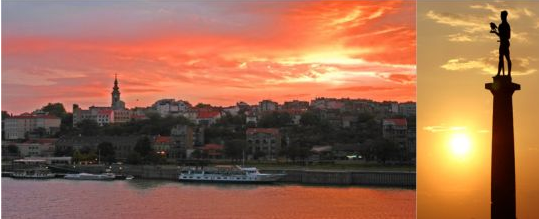
City of many nations, BELGRADE is a city with a tumultuous, but also frequently tragic past, primarily due to its unique position at the confluence of the Sava and Danube rivers, on the border between the East and the West. Due to its position it was rightfully named “Gates of the Balkans” and the “Doors of Middle Europe”. Belgrade is one of the oldest cities in Europe with a 7000-year history. The space around the large rivers of the Sava and Danube was already populated in the Stone Age. The Celts named the populated fortress SINGIDUNUM, where the first part of the word „Singi“ means round, and „dunum“ fortification or town. In the Byzantine Age, Singidunum became an important city of the vast empire. The Slavic name BEOGRAD (Beli grad – White City – probably because its ramparts were made of white limestone) may first be found in records from the 9th century. Belgrade flourished in 19th and 20th centuries during the reign of the Obrenovic dynasty and Karadjodjevic dynasty. It was then and it still is an important strategic point, the crossroads from the East to the West and one of the most significant cities in the Balkans.
TEMPLE OF SAINT SAVA
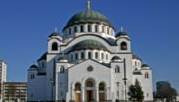 |
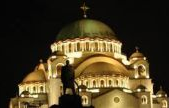 |
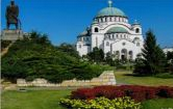 |
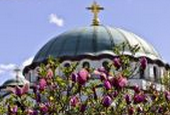 |
KALEMEGDAN
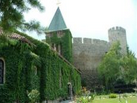 |
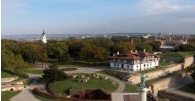 |
 |
THE OLD ROYAL PALACE OF THE SERBIAN OBRENOVIC DYNASTY
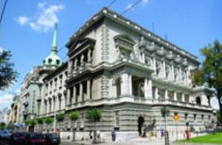 |
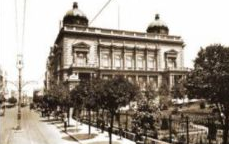 |
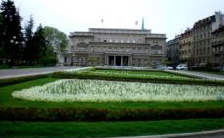 |
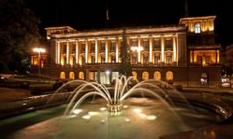 |
RESIDENCE OF PRINCESS LJUBICA OBRENOVIC
 |
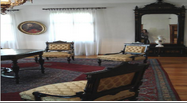 |
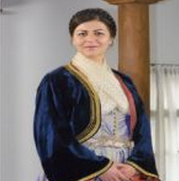 |
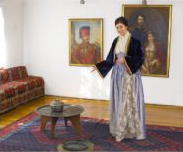 |
THE PALACIES OF THE SERBIAN KARADJORDJEVIC DYNASTY – DEDINJE ROYAL COMPOUND – BELGRADE
THE ROYAL PALACE in Dedinje was built between 1924 and 1929, on orders by King Alexander I, as the official royal residence. It was designed by the architect Živojin Nikolić and the academician Nikolaj Krasnov from the Royal Academy. Today it is the home of the heir to the throne, Aleksandar II and his family. It is a large impressive villa of white stone in the Serbian-Byzantine style. The Palace is surrounded by pergolas, terraced gardens, fishponds, a pavilion and a bandstand. The stone-paved Ceremonial Hall is decorated with copies of frescoes from the monasteries of Dečani and Sopoćani. The Blue Drawing Room is decorated in the Baroque style, while the Golden Drawing Room is in the Renaissance style, as is the Large Dining Room. The marble columns in these rooms bear a luxuriously coffered wooden ceiling with bronze chandeliers. These rooms are decorated in the Renaissance style, with valuable paintings, wooden chests and articles from the royal collection.
THE PALACIES OF THE SERBIAN KARADJORDJEVIC DYNASTY – DEDINJE ROYAL COMPOUND – BELGRADE
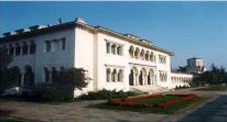 |
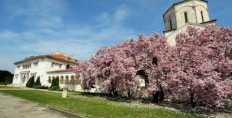 |
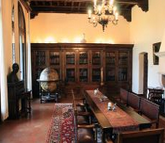 |
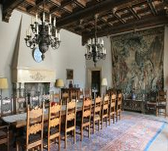 |
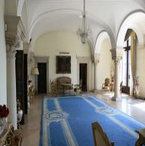 |
The building of the WHITE PALACE, which is part of the Royal Palace complex, was built to the wishes of King Aleksandar I as a residence for his sons. It was built from 1934 to 1937 to a design by the architect Aleksandar Đorđević. The ground floor of this Classical building contains a Ceremonial Hall and a suite of Drawing rooms decorated in Louis XV and XVI style with Venetian chandeliers. It also contains the Palace Library, which used to contain 35,000 books, and the Ceremonial Dining Room furnished in Chippendale style. Within the Palace complex on the south side is the Palace Family Chapel which is linked to the main building by a columned portico. The Chapel is dedicated to St. Andrej First-called (Sveti Andrej Prvozvani) (the patron Saint of the Karađorđević family). The chapel is modeled on one in the Monastery of St. Andrija at Treska in Macedonia, which was built by Andrija, son of King Vukašin in 1389. The Chapel was designed and built at the same time as the main building.
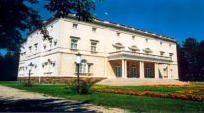 |
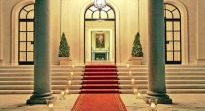 |
SKADARLIJA - THE OLD, BOHEMIAN QUARTER OF BELGRADE
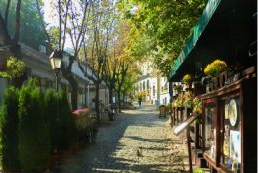 |
 |
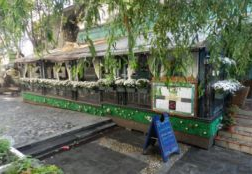 |
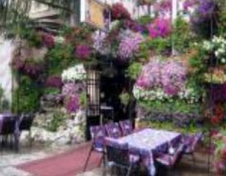 |
CLUBBING
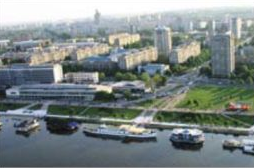 |
 |
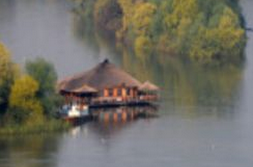 |
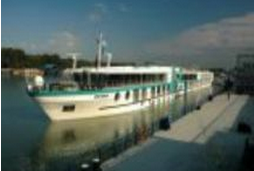 |
Bilateral Talks
- Participants0
- Meetings Requested0
- Meetings Accepted0
Participants
-
 Afghanistan 3
Afghanistan 3 -
 Albania 2
Albania 2 -
 Armenia 1
Armenia 1 -
 Austria 5
Austria 5 -
 Azerbaijan 5
Azerbaijan 5 -
 Belarus 1
Belarus 1 -
 Belgium 4
Belgium 4 -
 Bosnia-Herzegovina 18
Bosnia-Herzegovina 18 -
 Brazil 7
Brazil 7 -
 Bulgaria 5
Bulgaria 5 -
 Canada 1
Canada 1 -
 China 3
China 3 -
 Congo-Kinshasa(Zaire) 3
Congo-Kinshasa(Zaire) 3 -
 Croatia 24
Croatia 24 -
 Czech Republic 7
Czech Republic 7 -
 Egypt 9
Egypt 9 -
 Estonia 1
Estonia 1 -
 France 6
France 6 -
 Germany 20
Germany 20 -
 Ghana 1
Ghana 1 -
 Greece 16
Greece 16 -
 Iran 2
Iran 2 -
 Italy 44
Italy 44 -
 Japan 10
Japan 10 -
 Kazakhstan 7
Kazakhstan 7 -
 Kuwait 1
Kuwait 1 -
 Macedonia 10
Macedonia 10 -
 Malta 4
Malta 4 -
 Moldova 3
Moldova 3 -
 Montenegro 1
Montenegro 1 -
 Netherlands 6
Netherlands 6 -
 New Zealand 1
New Zealand 1 -
 Nigeria 7
Nigeria 7 -
 Norway 1
Norway 1 -
 Palestine 1
Palestine 1 -
 Philippines 1
Philippines 1 -
 Poland 11
Poland 11 -
 Portugal 3
Portugal 3 -
 Romania 21
Romania 21 -
 Russian Federation 42
Russian Federation 42 -
 Saudi Arabia 2
Saudi Arabia 2 -
 Serbia 104
Serbia 104 -
 Slovakia 6
Slovakia 6 -
 Slovenia 17
Slovenia 17 -
 South Korea 8
South Korea 8 -
 Spain 12
Spain 12 -
 Switzerland 4
Switzerland 4 -
 Taiwan 2
Taiwan 2 -
 Tunisia 4
Tunisia 4 -
 Turkey 37
Turkey 37 -
 Ukraine 9
Ukraine 9 -
 United Kingdom 12
United Kingdom 12 -
 USA 4
USA 4 -
 Uzbekistan 1
Uzbekistan 1 -
 Venezuela 1
Venezuela 1 - Total of Participants541
Profile views
- Before Event277940
- After Event119819
Important dates
- 18.01.2016.Deadline for ABSTRACT SUBMISSION01.01.2016End of EARLY BIRD REGISTRATION21.04.2016 - Congress
All pictures and ABSTRACT BOOK
 |
 |
 |
